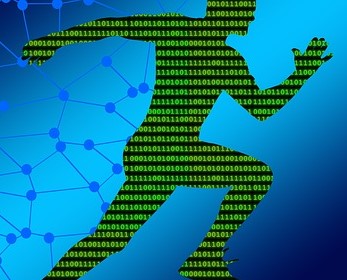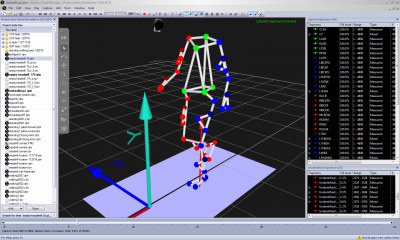 The Human Dynamics and Controls Lab, or HDCL, focuses on investigating and improving movement control and function through two main areas: assistive device development and locomotion biomechanics.
The Human Dynamics and Controls Lab, or HDCL, focuses on investigating and improving movement control and function through two main areas: assistive device development and locomotion biomechanics.
The HDCL’s interest in assistive device development stems from a desire to improve function and the quality of life of persons with disability. To address these areas, we have been involved in the development of powered orthotic devices and multi-speed wheel systems for manual wheelchairs. Significant investments in research and funding have afforded amputees revolutionary breakthroughs in powered prosthetics. In contrast, advances in orthotics have generally been neglected and powered orthotic (exoskeleton) research is in its infancy – despite vastly more people disabled due to impaired limb function as a consequence of neuromuscular pathology or injury. Compared to powered prosthetic devices, which support actuation and power systems within the space of a missing limb, powered orthotics have a substantial challenge of supporting these systems on the outside of existing but weakened limb. Our group is interested in addressing issues of bulk, weight, control, and runtime, which are significant barriers to the development and use of portable powered orthotic devices. Funding as a testbed for the NSF Engineering Research Center for Compact and Efficient Fluid Power (CCEFP) has motivated us to develop powered orthoses to demonstrate barriers and opportunities in compact untethered fluid power orthotic devices.
In terms of locomotion biomechanics, the HDCL has been working on developing new measurement tools to better quantify movement patterns and utilizing these tools to understand movement biomechanics of clinical and workforce populations. Support from the NSF led to new techniques to quantify the complex spatiotemporal relationships observed during movement and locomotion. These techniques use data collected by motion capture technology to better quantify changes in movement symmetry, timing, complexity, variability, and coupling.
Our lab director is Elizabeth T. Hsiao-Wecksler.
Check out our website here, and click the tabs below to learn about our current projects.
 Modern humans display a wide range of variation in body size and shape. While all humans practice bipedalism in essentially the same way, it is unclear how these vast differences in body size affect locomotor performance and activity. This project will evaluate the functional consequences of body size in humans through a lab-based biomechanics study of 80 short and tall male and female subjects and a bone microstructure analysis of 30 femora and tali. Previous studies of scaling patterns in mammals suggest that size-related differences will be present in three major areas:
Modern humans display a wide range of variation in body size and shape. While all humans practice bipedalism in essentially the same way, it is unclear how these vast differences in body size affect locomotor performance and activity. This project will evaluate the functional consequences of body size in humans through a lab-based biomechanics study of 80 short and tall male and female subjects and a bone microstructure analysis of 30 femora and tali. Previous studies of scaling patterns in mammals suggest that size-related differences will be present in three major areas: